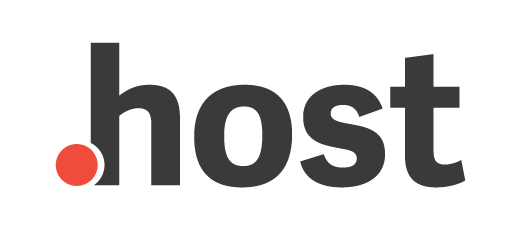Content
As cumulative production increases, costs fall. The first companies in the market have a big advantage because newcomers must start selling at lower prices and suffer large initial losses. Notice from Table 2 that the unit labor hours and unit labor cost decrease by 20% each time the cumulative output is doubled. However, the cumulative total labor hours and cumulative total labor cost increase by a variable rate. This means that columns 3 and 5 are much more difficult to develop. It also means that the cumulative total hours and cost generated by the two models are not compatible when based on the same learning rate.
Suppose, for example, that a firm producing machine tools knows that its labor requirement per machine for the first 10 machines is 1.0, the minimum labor requirement A is equal to zero, and fi is approximately equal to 0.32. Table 7.3 calculates the total labor requirement for producing 80 machines. Table G.1 gives the data needed to calculate the cumulative number of hours through each month of the schedule. Table G.2 shows these calculations. The cumulative amount of time needed to produce the entire schedule of 38 units is 16,580.9 hours, which exceeds the 15,000 hours budgeted. By finding how much the cumulative total hours increased each month, we can break the total hours into monthly requirements.
What is learning curve with example?
It is more able to absorb price increases through accepting lower profit margins. It must reduce the firm’s cost below that of its competitors while offering https://business-accounting.net/ adequate value. It can be very effective in labour oriented industry. B. Strategic positions are fixed; they do not change like the environment.
The role expected of technology is critical in the formulation of manufacturing strategy. Many a company has sailed into what does it mean for a firm to have an 80 percent learning curve? the unknown, trailing glowing reports about the R&D under way in its laboratories and the new products it is developing.
How can I improve my learning curve?
Conversely, if betterment is not believed possible, then the incentive to seek improvement is reduced, and an atmosphere of maintaining the status quo is encouraged. Assembly workers get to frown on increases as rate-breaking, and engineers who have ideas for possible improvement may hesitate to push them if they will be interpreted as “rocking the boat,” or if failure risks censure.
- However, the economic value created by Sparrow Inc. is more than that created by Bison Autos.
- Skepticism that improvement can continue may be another factor that has limited more general acceptance of this technique.
- They become mentally more confident and spend less time hesitating, learning, experimenting, or making mistakes.
- Do several similar activities all at the same time.
- Suppose, for example, that a firm producing machine tools knows that its labor requirement per machine for the first 10 machines is 1.0, the minimum labor requirement A is equal to zero, and fi is approximately equal to 0.32.
The points in the exhibit show a declining trend for productive labor man-hours on maintenance and shutdowns during the years 1949–1956. At the end of that period the plot seems to be leveling off. But actually, as the 1958 point shows, the trend continued, ending up about where it should have been expected. The last point is particularly important. Yet most managements have failed to recognize that technological progress is a kind of learning. Assigning specialists to seek technical improvements and to incorporate them in operations obviously helps bring about improvement. The industrial learning curve thus embraces more than the increasing skill of an individual by repetition of a simple operation.
In processing units
Very little is known about how to plan for this type of technological change. But we can point to two courses of action that some major companies have followed in avoiding the problems we have described.
What Is a Learning Curve? – Investopedia
What Is a Learning Curve?.
Posted: Sun, 26 Mar 2017 06:08:23 GMT [source]
Study of a number of operations which are important components of major industries reveals that they have traced improvement patterns with learning curve characteristics. If learning has been occurring, it is reasonable to believe that it can continue, if the dynamic content of the environment remains the same. It is prudent to include this potential of existing operations for continued improvement in expansion plans and other longer term forecasts. However, those who had selected the original one were still convinced it could perform adequately, and asked for more time. The limiting effect of “ceiling psychology” also shows up in the expected performance of new equipment.
Wright’s law and the discovery of the learning curve effect
The hotter forgings shrank more on cooling, and in this way continued to fall within tolerance. This practice permitted a die to produce triple the normal output.
We can’t use the formula for K because it includes the value of b which is unknown. Thus, we must use the alternative midpoint formulas described by Liao [see p. 309].
However, due to the nature of the learning curve, the x-axis is doubling and incrementally taking less time per unit. For example, consider the graph below that demonstrates the approximate average time needed to perform a given number of tasks. Let’s use an 80% learning curve as an example. This means that every time we double the cumulative quantity, the process becomes 20% more efficient.
Delivers low-cost products and services to a specific, narrow part of the market. Focuses on reducing the economic value created to drive down costs. In analyzing the difficulties of Ford and other companies, we are not arguing that the pursuit of a cost-minimization strategy is inappropriate. The failure of many companies, particularly small, innovative ones, can be traced to their inability to make the transition to high volume and cost efficiency. Nevertheless, management needs to recognize that conditions stimulating innovation are different from those favoring efficient, high-volume, established operations.
Which of the following statements is true regarding an 85 percent learning curve?
For example, assume that direct labor cost $20 per hour in the problem above. The cumulative average hours and cost as well as cumulative total hours and cost are provided below for doubled quantities 1 through 8. DiscountHaven Inc. is a large chain of hypermarkets. It has cost benefits due to its extensive operation. The company’s marketing and sales, logistics, administrative, and other such related costs get divided between a large number of product units stocked in its stores. This makes it difficult for smaller retail stores and supermarkets to compete against DiscountHaven’s low prices.
What is the learning effect in research?
The learning effect is defined as a significant increase occurring in cognitive test scores as the number of repetitions increases until the score no longer changes and achieves stability.
The threat of economic extinction is like any other threat of death. It prods the firm to strive for improvements and for the progress necessary to continue. When improvements must occur for survival, the question of whether they can occur becomes trivial. The problem becomes one of uncovering what has to be there. A conference with his staff developed the explanation that the many changes required by the government were responsible for the lack of satisfactory progress. One of the factors affecting the dynamic content of the environment is faith. If progress is believed possible, it will likely be sought; and if it is looked for, there is some possibility of finding it.




